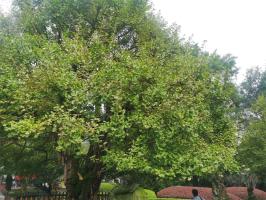Introduction
Planting trees is an important part of reducing the effects of climate change. With the ongoing global crisis of deforestation, people across the world are coming together to plant trees at an unprecedented pace. In this article, we will explore what will happen if we plant 20 million trees.
The Impact of Planting Trees
Planting trees has a positive impact on the environment. It helps to reduce carbon dioxide in the atmosphere by converting it into oxygen, thus helping in regulating rainfall patterns, improving air quality, and enhancing biodiversity. If we plant 20 million trees, it would mean that we have created a renewable source of oxygen. This would have a profound impact on the quality of the air we breathe, making it cleaner and safer to inhale.
Reforestation & Biodiversity
A significant portion of deforestation happens due to human activities such as logging and agriculture. The removal of trees and vegetation lead to soil erosion, and causes widespread environmental degradation. By planting 20 million trees, we are not only preventing deforestation, but also increasing forest cover. This gives an opportunity for wildlife to thrive and for species to regain its lost habitat. Reforestation increases the number of species that call the area home, which eventually leads to more stable ecosystems.
Climate Change and Carbon Sequestration
Carbon dioxide is one of the most significant contributors to climate change. Forests act as sinks, absorbing carbon from the atmosphere and converting it to organic matter. It is estimated that every tree absorbs 48 pounds of carbon dioxide annually. 20 million trees would absorb over 900 million pounds of CO2 per year or remove 8,000 vehicles from the road. Conserving our ecosystems through planting trees has the potential to reduce the concentration of carbon dioxide in the atmosphere which could mitigate climate change in the long term.
Empowerment of Local Communities
Planting trees is a strategy that empowers local communities. By creating stable ecosystems, we create more opportunities for people to plant crops or obtain other resources which can benefit their livelihoods. This in turn empowers communities to take control of their own environment and secure sustainable sources of food, medicine and other resources. It is a continuous cycle that generates both positive environmental as well as social impacts.
Conclusion
Planting 20 million trees is one of the most effective ways of addressing climate change, improving air quality, and creating sustainable ecosystems. It is a strategy that has far-reaching positive impacts and holds the potential to empower local communities. With the ever-growing need to safeguard the environment, each one of us has a role to play. Through collective efforts, we can bring positive change and secure a brighter future for generations to come.

 how many times do yo...
how many times do yo... how many planted tre...
how many planted tre... how many pine trees ...
how many pine trees ... how many pecan trees...
how many pecan trees... how many plants comp...
how many plants comp... how many plants can ...
how many plants can ... how many plants and ...
how many plants and ... how many pepper plan...
how many pepper plan...































